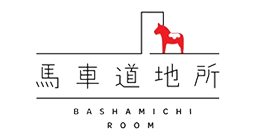Major Cities Go Nearly Cash-Free
Japan’s biggest cities — Tokyo, Osaka, Kyoto, and Fukuoka — now offer near-universal acceptance of major international credit cards including Visa, Mastercard, American Express, and UnionPay.
Even small cafés and souvenir shops are adopting portable payment systems like Square and AirPay, meaning fewer “cash only” surprises for travelers.
However: Rural towns and family-run businesses may still prefer yen in coins and notes. Travelers heading off the beaten path should carry at least ¥10,000 in cash for safety.
Smartphone Payments for the Win
From bustling Shibuya to the snowy streets of Sapporo, foreign visitors can now pay with their phones:
- Alipay and WeChat Pay are widely accepted at convenience stores, restaurants, and duty-free shops.
- Apple Pay and Google Pay can be used for contactless card payments, as well as to top up Suica or PASMO for trains and buses.
- PayPay + Alipay+ integration means visitors from multiple countries can use their own QR apps without downloading new ones.
Public Transport Joins the Cashless Revolution
Tokyo Metro, Toei Subway, and some Kansai-area lines now accept Visa and Mastercard contactless taps directly at ticket gates.
With the Osaka–Kansai Expo 2025 on the horizon, more buses and railways are upgrading for foreign-issued cards.
Challenges Still Ahead
While coverage has improved, some hurdles remain:
- Older payment terminals may reject certain foreign cards.
- Public offices, some clinics, and rural buses may still require cash.
Travelers’ Quick Tips 🧳
✅ Carry a small amount of yen (¥5,000–¥10,000) for emergencies.
✅ Look for “Visa touch” or “Mastercard contactless” symbols at train stations.
✅ Save receipts for larger purchases — useful for tax-free shopping refunds.
✅ Ask “Can I pay by card?” before ordering in small restaurants.


